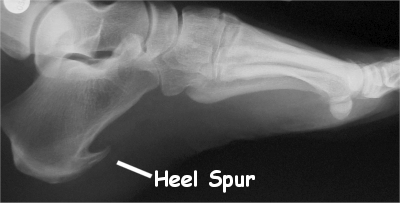Plantar Fasciitis
Overview
Plantar fasciitis is one of the most common causes of heel pain. It involves inflammation of a thick band of tissue that runs across the bottom of your foot and connects your heel bone to your toes (plantar fascia).
Plantar fasciitis commonly causes stabbing pain that usually occurs with your first steps in the morning. As you get up and move, the pain normally decreases, but it might return after long periods of standing or when you stand up after sitting.
Plantar fasciitis is more common in runners. People who are overweight and those who wear shoes with inadequate support also have an increased risk of plantar fasciitis
Causes
Your plantar fascia is in the shape of a bowstring, supporting the arch of your foot and absorbing shock when you walk. If tension and stress on this bowstring become too great, small tears can occur in the fascia. Repeated stretching and tearing can irritate or inflame the fascia. Sometimes the development of a bone spur on the heel (calcaneal spur) can contribute to the inflammation, although the cause remains unclear in many cases of plantar fasciitis, and often these spurs remain completely asymptomatic


Diagnosis & Treatment
Initial Diagnosis

Plantar fasciitis is typically diagnosed based on your medical history and physical examination. During the exam, your doctor will check for areas of tenderness in your foot. The location of your pain can help determine its cause.
Advanced Diagnosis
Usually no tests are necessary. Your doctor might suggest an X-ray or magnetic resonance imaging (MRI) to make sure another problem, such as a stress fracture, is not causing you pain.
Sometimes an X-ray shows a piece of bone sticking out (spur) from the heel bone. In the past, these bone spurs were often blamed for heel pain and removed surgically. But many people who have bone spurs on their heels have no heel pain.
Initial Treatment
Most people who have plantar fasciitis recover in several months with conservative treatment, including resting, icing the painful area and stretching.
Medications
Pain relievers such as ibuprofen (Advil, Motrin IB, others) and naproxen sodium (Aleve) may ease the pain and inflammation caused by plantar fasciitis.
Therapies
Stretching and strengthening exercises or using special devices may relieve symptoms. They include:
- Physical therapy. A physical therapist can show you a series of exercises to stretch the plantar fascia and Achilles tendon and to strengthen lower leg muscles. A therapist might also teach you to apply athletic taping to support the bottom of your foot.
- Night splints. Your physical therapist or doctor might recommend that you wear a splint that stretches your calf and the arch of your foot while you sleep. This holds the plantar fascia and Achilles tendon in a lengthened position overnight to promote stretching.
- Orthotics. Your doctor might prescribe off-the-shelf or custom-fitted arch supports (orthotics) to help distribute pressure to your feet more evenly.
Advanced Treatment
Injections
Injecting steroid medication into the tender area can provide temporary pain relief. Multiple shots aren’t recommended because they can weaken your plantar fascia and possibly cause it to rupture. Using ultrasound imaging, platelet-rich plasma obtained from the patient’s own blood can be injected to promote tissue healing.
Extracorporeal shock wave therapy
In this procedure, sound waves are directed at the area of heel pain to stimulate healing. It’s usually used for chronic plantar fasciitis that hasn’t responded to more-conservative treatments. Some studies show promising results, but it hasn’t been shown to be consistently effective.
Ultrasonic tissue repair
This minimally invasive technology was developed in part by Mayo Clinic doctors. It uses ultrasound imaging to guide a needlelike probe into the damaged plantar fascia tissue. Using ultrasound energy, the probe tip vibrates rapidly to break up the damaged tissue, which is then suctioned out.
Surgery
Few people need surgery to detach the plantar fascia from the heel bone. It is generally an option only when the pain is severe and other treatments have failed. It can be done as an open procedure or through a small incision with local anesthesia.
Prevention
To reduce the pain of plantar fasciitis, try these self-care tips:
- Maintain a healthy weight. Carrying extra weight can put extra stress on your plantar fascia.
- Choose supportive shoes. Buy shoes with a low to moderate heel, thick soles, good arch support and extra cushioning. Don’t walk barefoot.
- Don’t wear worn-out athletic shoes. Replace your old athletic shoes before they stop supporting and cushioning your feet.
- Change your sport. Try a low-impact sport, such as swimming or bicycling, instead of walking or jogging.
- Apply ice. Hold a cloth-covered ice pack over the area of pain for 15 minutes three or four times a day. Icing can help reduce pain and inflammation.
- Stretch your arches. Simple home exercises can stretch your plantar fascia, Achilles tendon and calf muscles.
Primary Source: Mayo Clinic
So tell us YOUR story!
Ask questions!
Disclaimer: This is an informational post designed to foster discussion. It should not substitute for the advice of your doctor.
